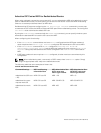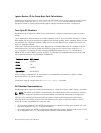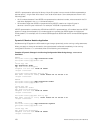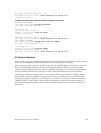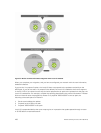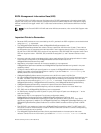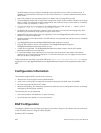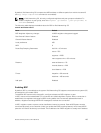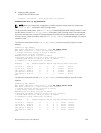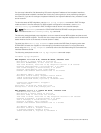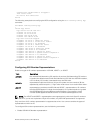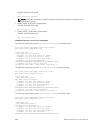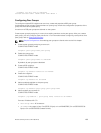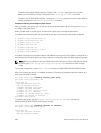
By default, Dell Networking OS compares the MED attribute on different paths from within the same AS
(the bgp always-compare-med command is not enabled).
NOTE: In Dell Networking OS, all newly configured neighbors and peer groups are disabled. To
enable a neighbor or peer group, enter the neighbor {ip-address | peer-group-name} no
shutdown
command.
The following table displays the default values for BGP on Dell Networking OS.
Table 9. BGP Default Values
Item Default
BGP Neighbor Adjacency changes All BGP neighbor changes are logged.
Fast External Fallover feature Disabled
Graceful Restart feature Disabled
Local preference 100
MED 0
Route Flap Damping Parameters
half-life = 15 minutes
reuse = 750
suppress = 2000
max-suppress-time = 60 minutes
Distance
external distance = 20
internal distance = 200
local distance = 200
Timers
keepalive = 60 seconds
holdtime = 180 seconds
Add-path Disabled
Enabling BGP
By default, BGP is not enabled on the system. Dell Networking OS supports one autonomous system (AS)
and assigns the AS number (ASN).
To establish BGP sessions and route traffic, configure at least one BGP neighbor or peer.
In BGP, routers with an established TCP connection are called neighbors or peers. After a connection is
established, the neighbors exchange full BGP routing tables with incremental updates afterward. In
addition, neighbors exchange KEEPALIVE messages to maintain the connection.
In BGP, neighbor routers or peers can be classified as internal or external. External BGP peers must be
connected physically to one another (unless you enable the EBGP multihop feature), while internal BGP
peers do not need to be directly connected. The IP address of an EBGP neighbor is usually the IP address
Border Gateway Protocol IPv4 (BGPv4)
183




